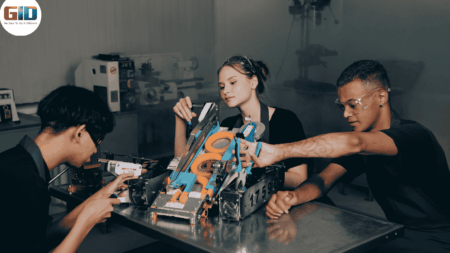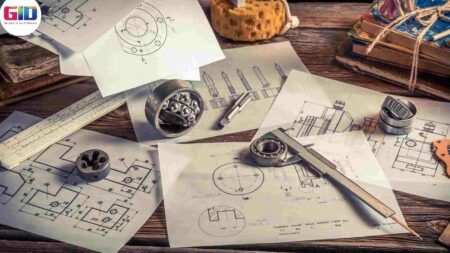5 Crucial Steps for Developing New Electronic Products
Discover the essential important steps for the development of new products with electronics. Our blog outlines five key phases to guide you through creating innovative and successful electronic products.
Development of products with electronics is as equally challenging as the development of generic, non-electronic products. New product development, whether electrical, mechanical, electromechanical, medical, or generic, is a tough task. Materializing a mere new product concept into reality involves several steps. For products with electronics, however, in addition to the standard product development steps, there are several more steps involved. Here in this blog, we shed some light on 5 important steps that entail the development of new products with electronics.
Step 1. Design the Circuit Schematic
Designing the circuit schematic for products with electronics usually involves early research to identify and select the ideal topology (circuit diagram) and most affordable, yet efficient components.
The step may also include running software simulations as well as bread boarding. Speaking of bread boarding, it is nothing but the creation of basic prototypes for products with electronics.
Designing the circuit schematic is one of the important steps for the development of new products and requires extensive expertise in electronics engineering. Industry experts rely on specialized computer software to create these schematics. Among various options, SOLIDWORKS, part of the 3DEXPERIENCE platform from Dassault Systèmes, stands out as the most versatile and popular tool. Utilizing such advanced software is crucial in the important steps for the development of new products, ensuring precise and efficient design processes for electronic components.
Step 2. Develop the PCB (Printed Circuit Board) Layout
Utilizing the same software application as in Step 1., the experts now develop the PCB layout for the new product with electronics.
While some portion of the PCB layout may be auto-routed, the remaining portion would normally be routed manually. Usually, the PCB layout is very sensitive, for power components as well as RF components, such as Wi-Fi, Bluetooth, GPS, etc.
Once the final layout is complete, the software application will verify if the PCB aligns with its schematic. It will also check wire lengths, widths, spacing, and other factors to ensure that the PCB layout adheres to all guidelines for the specific PCB fabrication process. This verification is one of the crucial important steps for the development of new products.
Step 3. Create, Assess and Debug the Prototype
Once the final layout is complete, the software application will verify if the PCB aligns with its schematic. It will also check wire lengths, widths, spacing, and other factors to ensure that the PCB layout adheres to all guidelines for the specific PCB fabrication process. This verification is one of the crucial important steps for the development of new products.
Most inventors hope to perfect their design on the first attempt, but this is rarely achievable. No product prototype—whether generic, electronic, or mechanical—is flawless initially. This is especially true when dealing with the important steps for the development of new products. Rectifying issues in a prototype PCB can be particularly challenging, as identifying the precise problem in electronics is complex. Even after pinpointing the issue, implementing the correct fix can take time. Addressing these challenges is a crucial part of the important steps for the development of new products, ensuring a refined and successful final design.
Step 4. Program the Microcontroller
Today, almost all products with electronics have some sort of microcontroller, a small computer in the form of a chip, which acts as the brain of the product.
Microcontrollers are programmable and typically use the “C” programming language. For faster and more efficient performance, other high-level assembly languages may be utilized. Understanding these aspects is crucial in the important steps for the development of new products.
Often, the microcontroller is programmed by the expert who has designed the circuit; however, sometimes a specialist is brought to do the programming.
On a side note, because the products with electronics use a programmable microcontroller, they can also be called products with embedded software.
Step 5. Looks and Ergonomics
This step is always handled by other professionals. An expert who is proficient in 3D modeling is needed to create the adequate looks and ergonomic (user-friendly, comfortable and functional) designs for the new products with electronics.
Creating the packaging, i.e. the outer body or casing, for the products with electronics is a challenging task. Electrical products are susceptible to various damages; thus, when designing and developing the packaging for the products with electronics, the experts need to consider the following factors:
- Protection from electrostatic discharge
- Protection from mechanical damage
- Protection from electromagnetic interference
- Protection from heat
- Ease of maintenance
- Cost
As mentioned before, the development of products with electronics is challenging. Therefore, it will be a great idea to hire an eminent product design and product development company that, along with the design and development of generic products, also specializes in the design and development of products with electronics.
If you’re an innovator needing assistance with the important steps for the development of new products involving electronics, GID Development Corporation is here to help. As a leading product design and development company in California, USA, GID Development Corporation excels in the important steps for the development of new products such as electronics, electromechanical products, medical devices, and both generic and specialized products. They use the 3DEXPERIENCE platform from Dassault Systèmes, which assists them in designing and developing accurate product prototypes at reduced cost and time. No matter what the new product concept is, GID Development Corporation can “Get It Done.”
Currently, GID Development Corporation is offering a free 15-minute telephonic consultation with one of the veterans, Jim Grimes. You can call Jim Grimes at 714-323-1052 between 8:00 AM to 5:00 PM PST.

















